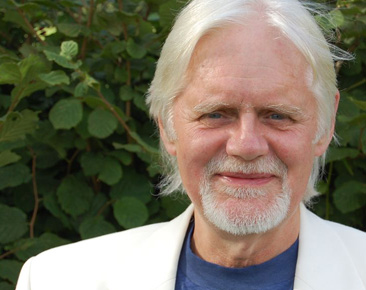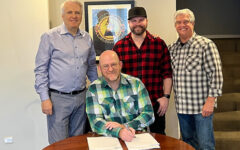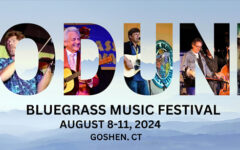
 Greetings bluegrass friends and fellow fans. If you are reading this, I’m betting you are a fan of bluegrass music, probably have an impressive music collection and more than likely enjoy live music at festivals and concerts. No matter how or where you listen to music, one thing rings loud and true: It all begins with a song! Even Happy Birthday had to be created by someone along the way. And though it seems like it’s always been there, like the air we breathe, someone did in fact create that song from nothing. It’s what legal eagles call, “intellectual property.” Sort of like real estate, except you CAN’T touch or see it. Songs have the universal ability to touch people from all walks of life, cross every boundary and reach straight into the heart and soul. Music changes lives. Words or no words, it transcends.
Greetings bluegrass friends and fellow fans. If you are reading this, I’m betting you are a fan of bluegrass music, probably have an impressive music collection and more than likely enjoy live music at festivals and concerts. No matter how or where you listen to music, one thing rings loud and true: It all begins with a song! Even Happy Birthday had to be created by someone along the way. And though it seems like it’s always been there, like the air we breathe, someone did in fact create that song from nothing. It’s what legal eagles call, “intellectual property.” Sort of like real estate, except you CAN’T touch or see it. Songs have the universal ability to touch people from all walks of life, cross every boundary and reach straight into the heart and soul. Music changes lives. Words or no words, it transcends.
It is my great pleasure to introduce this monthly column, “Songwriter’s Backstory,” that will feature some of your favorite bluegrass songs, plus the writers and the story behind the song as only the writers themselves can tell it. As a touring and recording singer/songwriter myself, one of the best compliments I receive is when an audience member tells me they enjoyed the story I shared while introducing a song. With that in mind, I thought it would be nice to share with our readers here at Bluegrass Today some of these back-stories in my monthly column. I hope you enjoy.
This month’s featured song is the bluegrass standard, Fox On the Run, written by Tony Hazzard in 1968. I caught up with Tony via Skype from his home in Cornwall, UK where he lives with his family on a 4-acre farm near a river. He described his present home to be a converted, renovated barn from 1821. Having been raised in the country on the outskirts of Liverpool as a young boy, Tony had a lot of inspiration to draw from for the imagery in the song.
I asked Tony what inspired him to write the song:
“The main source was an imagined scene, described in the chorus, of a hot summer’s day, a field of wheat sloping down to a river in the sunshine, and a blonde woman walking through the wheat field towards the river. Many years later, someone drove me ‘round the corner of a little country road in Cornwall and there below me was a field of reeds leading down to the River Tamar, and I said, ‘That’s just like the scene in my head when I wrote Fox On the Run.’ The second source was really just the feel of the music. I was a fan of The Band in the late 60’s, and their style was running through me at the time.”
Tony describes the writing of this song as ‘purely from his imagination.’ He did say that he actually imagined ‘wheat fields’ in place of the ‘corn’ mentioned, but he left it as is because it sang better.
Tony played the song for British rockers, Manfred Mann, and in 1968, Fox on the Run became a hit song for them in the UK. Manfred Mann changed some of the words and modulated to a different key from verse to chorus. It comes off as more of a ballad than the quick bluegrass tempo we are so used to hearing. Somehow, the Manfred Mann pop version was heard by Bill Emerson, who first recorded the song with Cliff Waldron. This brought it to the attention of The Country Gentleman. I asked Tony which version he had heard first, The Country Gentlemen’s or Tom T. Hall’s:
“I discovered much later, via the internet, that The Country Gentlemen got there first. I didn’t know anything about it until long after I’d received an invitation by The Country Music Association (I think, or BMI) to an awards banquet in Nashville in 1977. I didn’t know why I’d been invited. I was moving house anyway so didn’t give it a second thought.
A few years ago, I was watching TV and saw Kris Kristofferson accepting an award at the same awards presentation to which I’d been invited all those years ago! My publishers should really have known about it and sent me over, but they didn’t. Of course, that was for the Tom T. Hall version. I wasn’t aware of him at the time, but with hindsight I realized it was a real honor for such a great songwriter as himself to have covered my song.
In 1978 in Nashville, I bumped into a guitarist who’d played on the Tom T. Hall version. Sitting at my desk on my iMac having read on a bluegrass website that their version was the first bluegrass version. Can’t remember the name of the website, but the responder to a question about Fox On the Run knew more about its life in the US than I did!”
CBS Records released a solo artist LP of Tony’s music in 1969. The album went largely unnoticed but his songwriting continued to thrive. He found it very satisfying to continue as a songwriter and indie artist from that time until the present.
In 1976, Tom T. Hall took Fox On the Run to #9 on the US Billboard Charts and to #12 in Canada. The song went on to be recorded many more times by bluegrass and country bands all over the US. You can hardly walk past a festival jam without hearing a version of this beloved chestnut.
Since Fox on the Run is now pretty much considered to be a bluegrass standard, a high and deserving distinction in a very exclusive genre of music, I went on to ask Tony: “Were you familiar with bluegrass music when you first authored the song, or did you later discover it as you became aware of other renditions?”
Tony’s reply:
“Yes, my musical tastes were pretty broad when I was growing up. As a child, I was hearing ’50s singers, like Guy Mitchell, Rosemary Clooney and Perry Como, and UK Music Hall performers from the ’40s. Then it was folk/blues, like Blind Gary Davis, Woody Guthrie, Rambling Jack Elliot, Big Bill Broonzy, then The Everly’s, Little Richard, etc., but also Jimmy Reed and Ray Charles. In the ’50s in the UK, we had Johnny Duncan and his Bluegrass Boys, which I guess was a kind of crossover, smoothed-out bluegrass.
After many years, I realized that my tastes had a foundation in what I would call ‘celtic’ (Scottish and Irish) music which had been taken over to the US a long time ago to form Appalachian, bluegrass, and country music. There was often an emphasis on 4ths and 5ths with the 3rd missing, and I often use that feel when I play now.
There was a series of programs on BBC called The Transatlantic Sessions, in which folk, country, and bluegrass musicians from the US would come over to the UK and meet UK musicians. They would all stay in a hotel in Scotland and be filmed and recorded playing together; artists like Alison Krauss would play with Gaelic singers like Jule Fowlis. Not entirely bluegrass but with the origins clearly visible.
I had heard plenty of bluegrass music, but it wasn’t in my mind when I wrote Fox On the Run.
Manfred Mann never liked to copy a demo. He always liked to change things up. So some of the words have been changed (by Mike D’Abo, the singer), and Manfred relocated the verses into the subdominant key. Some years after his version and the bluegrass versions came out, I wrote another verse, which I sing live. I mentioned this on a bluegrass website after a bluegrass band had posted their version of FOTR. They then asked me if they could use the extra verse, to which I agreed, and they then posted a video of their new version!
These days I play it quite slowly and thoughtfully, and that works too.”
Below is the original lyric for the song with extra verse (*) that Tony wrote years after the song had already been a hit for so many:
FOX ON THE RUN
Now everybody knows the reason for The Fall,
When woman tempted man in Paradise’s hall.
This woman, she tempted me and she took me for a ride,
And, like the weary fox, I need a place to hide.
CHORUS
She walked through the corn leading down to the river,
Her hair shone like gold in the hot morning sun.
She took all the love that a poor man could give her
And left him to die like a fox on the run.
*It was many years ago, but it feels like yesterday,
When she led me through the corn on that fateful summer day.
I saw the sunlight in her hair; I saw the promise in her eyes;
And I didn’t even care that her words of love were lies.
CHORUS
Come raise your glass of wine and fortify your soul;
We’ll talk about the world and the friends we used to know.
I’ll illustrate a girl who wandered through my past.
She didn’t care to stay; the picture cannot last.
CHORUS
I asked Tony: “When you perform the song now, what is the story you tell your audience to set it up with?”
In Tony’s words:
“Most (older!) people in the UK know the Manfred version, so I ask them to join in the chorus. I also ask them to make sure they have a drink in their hands (for the last verse). Sometimes I tell the story of receiving the invitation to the awards banquet, not knowing why, and shrugging it off because I was moving house anyway. I always let them know about the bluegrass versions.”
And of course, we’re all wondering about the girl. Did he get ‘the girl’?:
“Haha! I suppose I must have…until she abandoned me! No, this was one purely from my imagination.”
In parting, I asked Tony if he had any idea what an iconic piece of work he had created back in 1968? He replied:
“I eventually realized it had become a standard, and I’m very proud of that fact; the song will remain long after I’m gone, and if people think it’s an old folk song, that’s fine by me!”
Oh how life imitates art and art imitates life, and it sure makes for great songs and material! And all turned out well. Tony Hazzard continues to write music and perform in and around his home town of Cornwall, London and across the UK. Here’s hoping we Bluegrass fans can get him to cross the pond to the US and share his music with us in person soon! Tony has recorded 7 solo records and has a brand new one about to be self-released. These songwriter treasures can be purchased through his website: www.TonyHazzard.com







